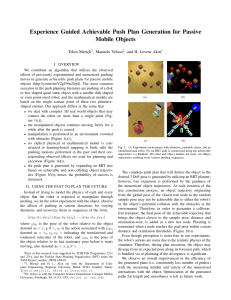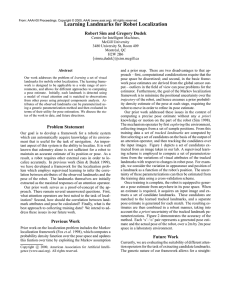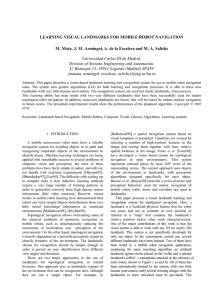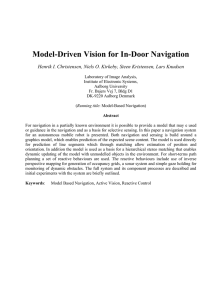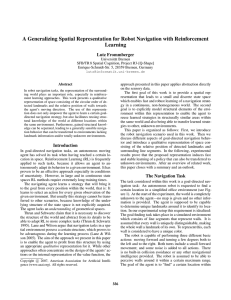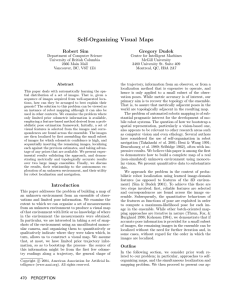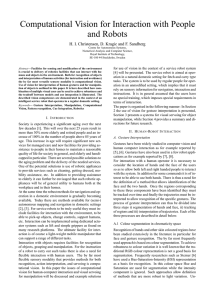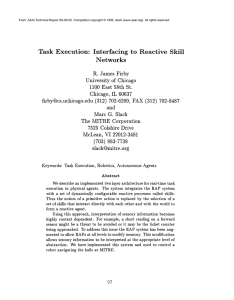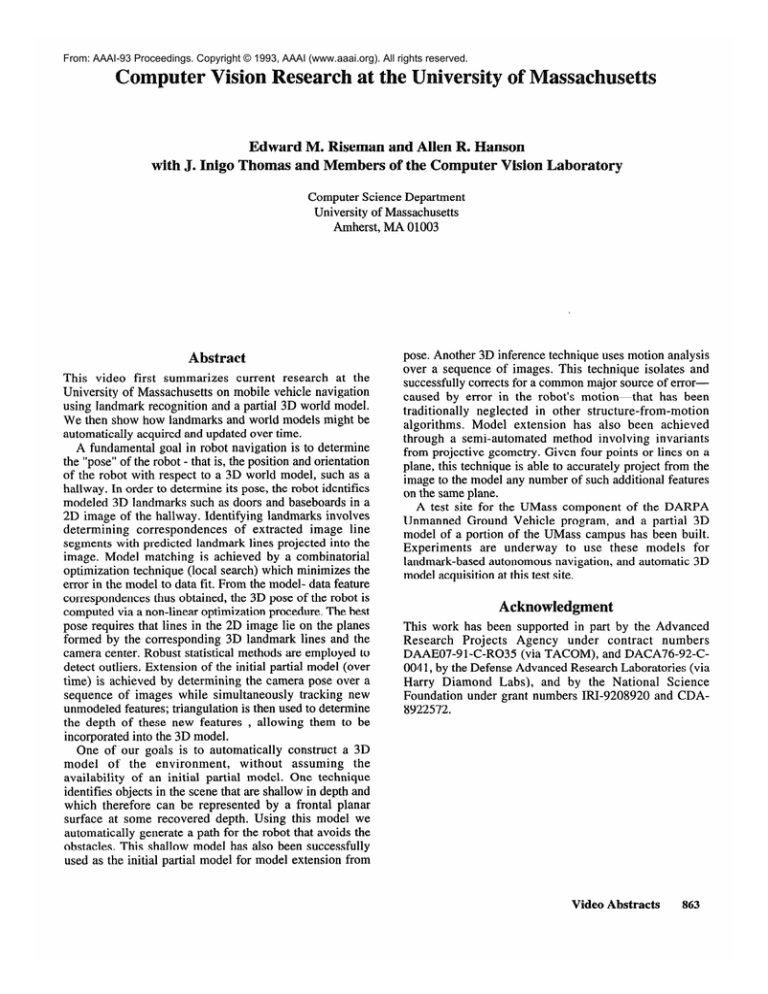
From: AAAI-93 Proceedings. Copyright © 1993, AAAI (www.aaai.org). All rights reserved.
puter Vision
rsity
ass
ts
Edward M. Riseman and Allen R. Hanson
with J. Inigo Thomas and Members of the Computer Vision
Computer Science Department
University of Massachusetts
Amherst, MA 01003
Abstract
This video first summarizes
current research at the
University of Massachusetts on mobile vehicle navigation
using landmark recognition and a partial 3D world model.
We then show how landmarks and world models might be
automatically acquired and updated over time.
A fundamental goal in robot navigation is to determine
the “pose” of the robot - that is, the position and orientation
of the robot with respect to a 3D world model, such as a
hallway. In order to determine its pose, the robot identifies
modeled 3D landmarks such as doors and baseboards in a
2D image of the hallway. Identifying landmarks involves
determining
correspondences
of extracted image line
segments with predicted landmark lines projected into the
image. Model matching is achieved by a combinatorial
optimization technique (local search) which minimizes the
error in the model to data fit. From the model- data feature
correspondences
thus obtained, the 3D pose of the robot is
computed via a non-linear optimization procedure. The best
pose requires that lines in the 2D image lie on the planes
formed by the corresponding
3D landmark lines and the
camera center. Robust statistical methods are employed to
detect outliers. Extension of the initial partial model (over
time) is achieved by determining the camera pose over a
sequence of images while simultaneously
tracking new
unmodeled features; triangulation is then used to determine
the depth of these new features , allowing them to be
incorporated into the 3D model.
One of our goals is to automatically
construct a 3D
model
of the environment,
without
assuming
the
availability
of an initial partial model. One technique
identifies objects in the scene that are shallow in depth and
which therefore can be represented
by a frontal planar
surface at some recovered depth. Using this model we
automatically generate a path for the robot that avoids the
obstacles. This shallow model has also been successfully
used as the initial partial model for model extension from
pose. Another 3D inference technique uses motion analysis
over a sequence of images. This technique isolates and
successfully corrects for a common major source of errorcaused by error in the robot’s motion-that
has been
traditionally
neglected
in other structure-from-motion
algorithms.
Model extension
has also been achieved
through a semi-automated
method involving
invariants
from projective geometry. Given four points or lines on a
plane, this technique is able to accurately project from the
image to the model any number of such additional features
on the same plane.
A test site for the UMass component of the DARPA
Unmanned
Ground Vehicle program, and a partial 3D
model of a portion of the UMass campus has been built.
Experiments
are underway
to use these models for
landmark-based autonomous navigation, and automatic 3D
model acquisition at this test site.
Acknowledgment
This work has been supported in part by the Advanced
Research
Projects
Agency
under contract
numbers
DAAE07-9 1-C-R035 (via TACOM), and DACA76-92-C0041, by the Defense Advanced Research Laboratories (via
Harry Diamond
Labs), and by the National
Science
Foundation under grant numbers IRI-9208920 and CDA8922572.
Video Abstracts
863




